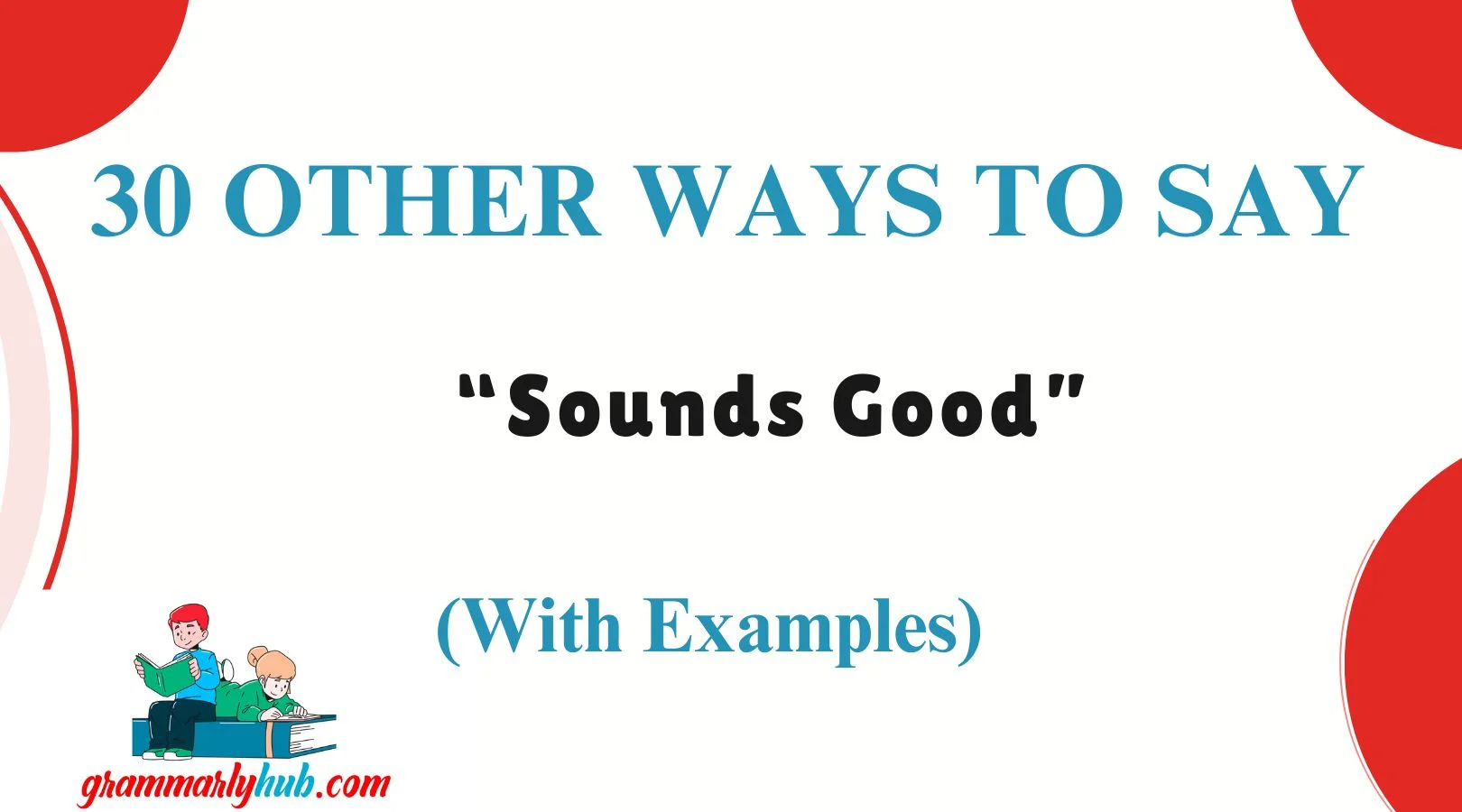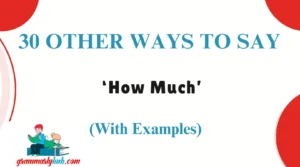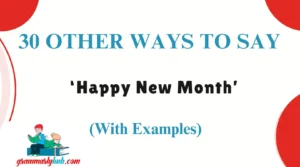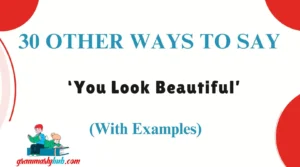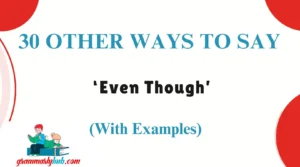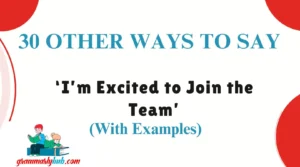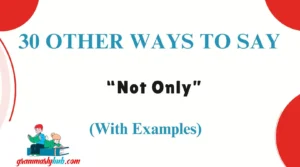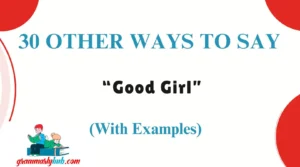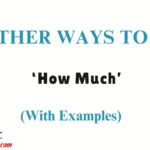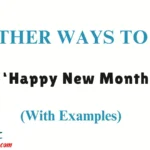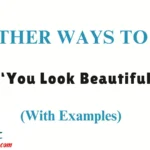Finding the right way to say “Sounds good” can help your communication feel more thoughtful, professional, or warm—depending on the context. Whether you’re replying to a colleague, agreeing with a friend, or confirming plans with a client, choosing a meaningful alternative can show attentiveness and make your message feel more personal.
This guide offers 30 empathetic and polished alternatives to help you say “Sounds good” in a way that fits your tone and audience.
What Does “Sounds Good” Mean?
“Sounds good” is a casual, friendly phrase often used to show agreement, approval, or understanding. It’s commonly used in conversations, texts, and emails to express that a plan, idea, or suggestion is acceptable or appreciated.
When to Use “Sounds Good”
Use “sounds good” when you want to:
- Confirm plans or next steps
- Show agreement without sounding too formal
- Respond positively to a suggestion or proposal
- Acknowledge a message with a cooperative tone
Is It Professional/Polite to Say “Sounds Good”?
Yes — in most casual or semi-formal settings, it’s perfectly fine. However, in formal communication, especially with clients, leadership, or unfamiliar contacts, a more polished alternative may be more appropriate.
Pros and Cons of Saying “Sounds Good”
Pros:
- Friendly and easygoing
- Quick and widely understood
- Great for informal or internal conversations
Cons:
- May seem too casual in formal or professional emails
- Can come off as non-committal in some contexts
- Lacks personalization or emotional nuance
Synonyms For “Sounds Good”:
- Absolutely
- Agreed
- All right
- Alrighty
- As you wish
- By all means
- Copy that
- Count me in
- Definitely
- Fine by me
- For sure
- Gladly
- Go ahead
- I’m good with that
- I’m in
- I’m on board
- I’m okay with that
- It’s settled then
- Looks good to me
- No problem
- Okay then
- Perfect
- Right on
- Roger that
- Sounds like a plan
- Sure thing
- That’s fine
- That works for me
- Very well
- You got it
1. That Works for Me
Definition: I’m okay with that; I agree to it.
Explanation: Shows clear acceptance while keeping a friendly, flexible tone.
Example: Meeting at 2 p.m.? That works for me.
Worst Use: Avoid if you don’t fully agree—it implies full alignment.
Tone: Cooperative, casual-professional
2. I’m On Board
Definition: I agree and support the idea.
Explanation: Used to express alignment and willingness to move forward.
Example: I’m on board with the new project direction.
Worst Use: Don’t use sarcastically; it should express genuine support.
Tone: Encouraging, team-oriented
3. Absolutely
Definition: A strong confirmation or enthusiastic agreement.
Explanation: Ideal when you want to express confidence or eagerness.
Example: Can you send that over by Friday? Absolutely.
Worst Use: May feel too strong in sensitive or hesitant conversations.
Tone: Confident, upbeat, professional
4.Fine by Me
Definition: That’s okay or acceptable from my point of view.
Explanation: A relaxed, low-pressure way to show agreement.
Example: We’ll go with option B, then? Fine by me.
Worst Use: Can sound indifferent if the tone isn’t warm.
Tone: Casual, agreeable
5.Sure Thing
Definition: Yes, definitely.
Explanation: Friendly and informal; great for verbal or casual digital conversations.
Example: Mind sending that doc? Sure thing.
Worst Use: Avoid in very formal or serious discussions.
Tone: Informal, cheerful
6. I Agree
Definition: I share your opinion or accept your suggestion.
Explanation: More formal than “sounds good,” it shows alignment clearly.
Example: I agree—let’s launch on Monday.
Worst Use: May sound too blunt in collaborative brainstorming.
Tone: Direct, polite, professional
7. That’s Fine
Definition: I accept that; it’s acceptable.
Explanation: A neutral, calm way to express agreement.
Example: We’ll reschedule for Thursday. That’s fine.
Worst Use: Without warmth, it may sound reluctant or dismissive.
Tone: Neutral, polite
8. That’s Perfect
Definition: That’s exactly right or works ideally.
Explanation: Use when something aligns very well with your expectations.
Example: We’ll send the invoice tomorrow. That’s perfect.
Worst Use: Avoid in serious disputes—it’s too cheerful.
Tone: Positive, approving
9. I’m Happy with That
Definition: I’m content or satisfied with the plan or outcome.
Explanation: Adds a personal tone and positive touch.
Example: Let’s go ahead with the simpler design. I’m happy with that.
Worst Use: Avoid if you’re actually unsure or hesitant.
Tone: Warm, sincere
10. Looks Good to Me
Definition: It appears acceptable or agreeable.
Explanation: Common in document or visual reviews.
Example: The layout’s ready for launch. Looks good to me.
Worst Use: Don’t use it if feedback is expected.
Tone: Friendly, visual, casual
11. No Objections Here
Definition: I have no reason to disagree or stop this.
Explanation: Slightly formal and diplomatic.
Example: We’ll proceed with option 2. No objections here.
Worst Use: Can sound passive if tone isn’t clear.
Tone: Neutral, agreeable
12. That’s Okay with Me
Definition: That’s acceptable to me.
Explanation: More casual and soft than “I agree.”
Example: We’ll shift the meeting to 4 p.m.? That’s okay with me.
Worst Use: May sound uncertain if confidence is needed.
Tone: Mild, informal
13. Consider It Done
Definition: I will do it right away.
Explanation: Strong affirmative response when someone requests something.
Example: Can you prepare the slides? Consider it done.
Worst Use: Don’t use it if you can’t follow through.
Tone: Assertive, reliable
14. Makes Sense
Definition: I understand and agree.
Explanation: A thoughtful and common phrase in analytical discussions.
Example: We should delay launch until after the holiday. Makes sense.
Worst Use: Avoid when enthusiasm is needed; it can sound distant.
Tone: Reasonable, calm
15. Agreed
Definition: I fully agree with what was said.
Explanation: Short, formal-sounding expression of mutual understanding.
Example: Agreed, we’ll finalize that next week.
Worst Use: Too clipped for highly emotional discussions.
Tone: Brief, professional
16. Copy That
Definition: Message received and understood.
Explanation: Popular in operations, logistics, or casual work exchanges.
Example: We’ll send the batch by noon. Copy that.
Worst Use: Too military-style for formal writing.
Tone: Informal, task-based
17. I’m Okay With That
Definition: I accept or have no issue with that.
Explanation: Expresses acceptance while showing consideration.
Example: Let’s move forward with the first draft. I’m okay with that.
Worst Use: Might sound hesitant in high-energy meetings.
Tone: Gentle, calm
18. Sure
Definition: Yes.
Explanation: One of the simplest and friendliest forms of agreement.
Example: Want to meet tomorrow at 11? Sure.
Worst Use: Avoid if brevity can be mistaken as dismissive.
Tone: Casual, friendly
19. That’s Acceptable
Definition: That meets the standard or is satisfactory.
Explanation: Polite and somewhat formal; good for negotiations.
Example: We’ll revise only the top three points. That’s acceptable.
Worst Use: Too impersonal for emotional agreements.
Tone: Formal, reserved
20. That Sounds Like a Plan
Definition: I agree and am ready to proceed.
Explanation: A lighthearted way to signal readiness.
Example: Let’s touch base Monday and circle back. That sounds like a plan.
Worst Use: May sound cliché if overused.
Tone: Cheerful, casual
21. I’m In
Definition: I’m participating or agreeing enthusiastically.
Explanation: Great for team-based decisions or volunteer situations.
Example: We’re volunteering Saturday—who’s in? I’m in.
Worst Use: Too casual for senior-level communications.
Tone: Fun, energetic
22. Works for Me
Definition: I agree, that’s suitable.
Explanation: Casual and confident way to confirm.
Example: Let’s use the same supplier. Works for me.
Worst Use: Don’t use it when you’re unsure.
Tone: Friendly, informal
23. I’m Good With That
Definition: I accept or support it.
Explanation: Expresses contentment, especially in decision-making.
Example: We’ll go with option 1. I’m good with that.
Worst Use: Can sound too informal if not phrased well.
Tone: Approving, relaxed
24. All Set
Definition: Everything is ready or agreed upon.
Explanation: Good for finalizing or wrapping up plans.
Example: We’ve got the tickets and the agenda. All set.
Worst Use: Not appropriate for initial agreement.
Tone: Complete, efficient
25. Green Light From Me
Definition: I approve it or give the go-ahead.
Explanation: Useful in managerial or oversight roles.
Example: We’re clear to launch. Green light from me.
Worst Use: May be misunderstood outside business teams.
Tone: Formal, action-driven
26. Go Ahead
Definition: Proceed; you have my permission.
Explanation: Confirms readiness to move forward.
Example: May I finalize the order today? Go ahead.
Worst Use: Too commanding for equal conversations.
Tone: Directive, confident
27. No Problem
Definition: I have no issue with that.
Explanation: Friendly, helpful confirmation.
Example: Can we move the meeting to 3? No problem.
Worst Use: May sound dismissive if not said warmly.
Tone: Informal, reassuring
28. Sure, That’s Fine
Definition: Yes, that’s okay.
Explanation: Simple, clear acceptance—can add politeness.
Example: I’ll update the layout. Sure, that’s fine.
Worst Use: Lacks enthusiasm when needed.
Tone: Neutral, easygoing
29. I Can Work With That
Definition: It’s acceptable, and I can adapt to it.
Explanation: Shows flexibility and willingness.
Example: We’ll shift the deadline a day. I can work with that.
Worst Use: Implies compromise—use when you mean it.
Tone: Flexible, accommodating
30. Let’s Do It
Definition: Let’s move forward; I’m in.
Explanation: Motivational and casual confirmation.
Example: Let’s try the new marketing strategy. Let’s do it.
Worst Use: Too informal for emails with senior stakeholders.
Tone: Energetic, positive
FAQs
1. Is it okay to use “Sounds Good” in professional emails?
Yes, “Sounds good” is acceptable in many professional settings, especially in casual or friendly correspondence. However, for more formal communication (like with executives or clients), alternatives like “I agree,” “That works for me,” or “That’s acceptable” may be more appropriate.
2. What’s a more formal way to say “Sounds Good”?
Some polished alternatives include:
- “I agree”
- “That works for me”
- “That’s acceptable”
- “Agreed”
These options convey the same sentiment with a tone that fits formal business settings.
3. Can I use “Sounds Good” in academic writing?
Not typically. In academic or research settings, more precise and objective phrases are preferred. Consider alternatives like “This approach is satisfactory” or “This seems appropriate.”
4. Which alternative to “Sounds Good” sounds more enthusiastic?
If you want to show genuine enthusiasm, use options like:
- “Absolutely”
- “Let’s do it”
- “Perfect”
- “I’m in”
These convey excitement and strong positivity.
5. What’s a polite yet neutral replacement for “Sounds Good”?
If you’re aiming for polite neutrality, try phrases like:
- “That’s fine”
- “I’m okay with that”
- “That’s acceptable”
These are especially helpful when you want to acknowledge a plan without sounding overly excited or indifferent.
Conclusion
Finding the right words matters—especially when you’re trying to express agreement, professionalism, or positivity in a message. While “Sounds good” is a helpful and friendly phrase, having a wide variety of alternative expressions lets you adjust your tone, match your audience, and communicate more clearly.
Whether you’re in a formal email, a casual chat, or a team meeting, there’s always a way to say “yes, I’m on board” that feels more thoughtful, warm, or polished.
From “Absolutely” and “Fine by me” to “I agree” and “Let’s do it,” these 30 alternatives are here to help you sound natural, respectful, and confident—no matter the setting.
The next time you’re tempted to type “Sounds good”, take a second to choose an expression that reflects your intent, personality, and connection to the conversation. A few thoughtful words can go a long way.

Emma Brooke is the voice behind Grammarly Hub, where grammar meets clarity. With a deep passion for the written word, Emma helps readers navigate the tricky waters of English grammar, writing tips, and effective communication.
